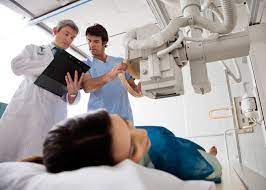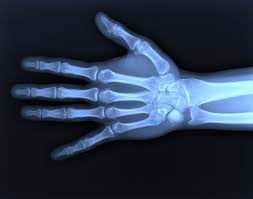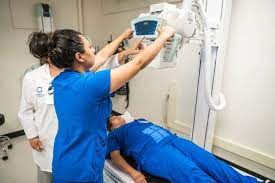
The Essential Role of a Radiology Technician in Healthcare
Radiology Technician: A Vital Role in Healthcare
Radiology technicians play a crucial role in the healthcare industry, working behind the scenes to help diagnose and treat various medical conditions. These professionals are skilled in operating imaging equipment to capture internal images of the human body, aiding physicians in making accurate diagnoses.
One of the primary responsibilities of a radiology technician is to perform diagnostic imaging examinations, such as X-rays, CT scans, MRIs, and ultrasounds. These imaging tests provide valuable information about a patient’s internal structures and help doctors identify injuries, diseases, or abnormalities.
In addition to operating imaging equipment, radiology technicians also play a key role in ensuring patient safety during procedures. They must carefully position patients to obtain clear images while minimizing radiation exposure. Radiology technicians follow strict protocols to protect both patients and themselves from unnecessary radiation exposure.
Furthermore, radiology technicians are responsible for maintaining and calibrating imaging equipment to ensure optimal performance. They must also keep detailed records of each procedure and communicate effectively with physicians to relay important findings from the imaging tests.
Education and training are essential for individuals pursuing a career as a radiology technician. Most professionals complete an accredited radiologic technology program and obtain certification through the American Registry of Radiologic Technologists (ARRT). Continuing education is often required to maintain certification and stay current with advancements in imaging technology.
In conclusion, radiology technicians are invaluable members of the healthcare team, playing a critical role in diagnosing and treating patients. Their expertise in operating imaging equipment and ensuring patient safety make them essential contributors to the field of medicine.
Exploring the Role of Radiology Technicians: Responsibilities, Training, Equipment, Safety, Work Environments, and Patient Interaction
- What does a radiology technician do?
- How do I become a radiology technician?
- What types of imaging equipment do radiology technicians operate?
- Is radiation exposure a concern for radiology technicians?
- What are the typical work settings for radiology technicians?
- Do radiology technicians work directly with patients?
What does a radiology technician do?
A radiology technician plays a vital role in the healthcare industry by operating imaging equipment to capture internal images of the human body. These professionals perform diagnostic imaging examinations, such as X-rays, CT scans, MRIs, and ultrasounds, to help physicians accurately diagnose injuries, diseases, or abnormalities. In addition to conducting imaging tests, radiology technicians ensure patient safety during procedures by positioning patients correctly to obtain clear images while minimizing radiation exposure. They are also responsible for maintaining and calibrating imaging equipment, keeping detailed records of procedures, and effectively communicating findings with physicians. Overall, a radiology technician’s primary focus is on providing high-quality imaging services that aid in patient diagnosis and treatment.
How do I become a radiology technician?
Becoming a radiology technician typically involves completing an accredited radiologic technology program and obtaining certification through the American Registry of Radiologic Technologists (ARRT). The first step is to enroll in a radiologic technology program, which usually includes coursework in anatomy, physiology, patient care, radiation physics, and medical imaging techniques. After completing the program, aspiring radiology technicians must pass the ARRT certification exam to become certified. Continuing education is often required to maintain certification and stay up-to-date with advancements in imaging technology. By following these steps and gaining practical experience in the field, individuals can embark on a rewarding career as a radiology technician.
What types of imaging equipment do radiology technicians operate?
Radiology technicians are trained to operate a variety of imaging equipment to capture detailed images of the human body for diagnostic purposes. Common types of imaging equipment that radiology technicians may operate include X-ray machines, computed tomography (CT) scanners, magnetic resonance imaging (MRI) machines, ultrasound devices, and fluoroscopy units. Each type of equipment serves a specific purpose in providing physicians with valuable information about a patient’s internal structures and conditions. Radiology technicians must be proficient in using these technologies effectively and safely to ensure accurate diagnostic results while prioritizing patient care and safety.
Is radiation exposure a concern for radiology technicians?
Radiation exposure is a common concern for radiology technicians due to their frequent interaction with imaging equipment that emits radiation. While the risk of radiation exposure is inherent in the nature of their work, radiology technicians are trained to follow strict safety protocols to minimize exposure to themselves and their patients. They use protective gear, such as lead aprons and thyroid shields, and adhere to established guidelines for positioning patients and operating imaging machines to reduce unnecessary radiation exposure. Regular monitoring and dose tracking further ensure that radiology technicians maintain safe levels of radiation exposure while performing essential diagnostic procedures.
What are the typical work settings for radiology technicians?
Radiology technicians can work in a variety of healthcare settings, depending on their specialization and area of expertise. Common work settings for radiology technicians include hospitals, diagnostic imaging centers, outpatient clinics, physician offices, and urgent care facilities. In these environments, radiology technicians collaborate closely with radiologists and other healthcare professionals to perform diagnostic imaging procedures on patients. They may also find employment in specialized areas such as orthopedic clinics, cancer treatment centers, or mobile imaging units that travel to different locations to provide imaging services. Overall, the diverse work settings available to radiology technicians offer opportunities for them to apply their skills in different clinical settings and contribute to the delivery of quality patient care.
Do radiology technicians work directly with patients?
Radiology technicians often work directly with patients to perform imaging procedures and ensure their comfort and safety throughout the process. They are responsible for explaining the imaging procedure to patients, positioning them correctly for optimal imaging results, and addressing any concerns or questions they may have. Radiology technicians also play a crucial role in maintaining a calm and reassuring environment during imaging tests, helping patients feel at ease during what can sometimes be a stressful experience. Their ability to interact with patients effectively while carrying out their technical duties makes them essential members of the healthcare team.



